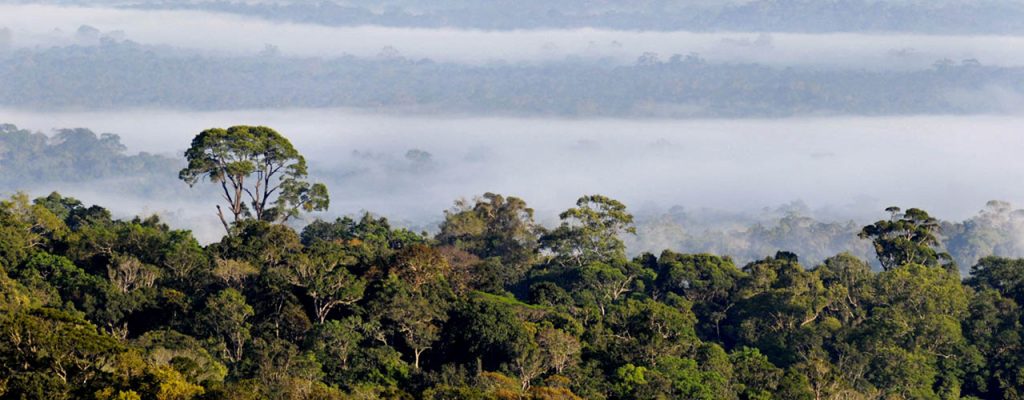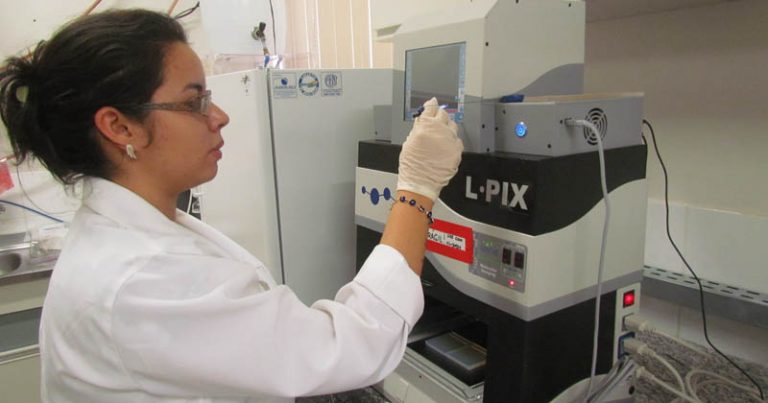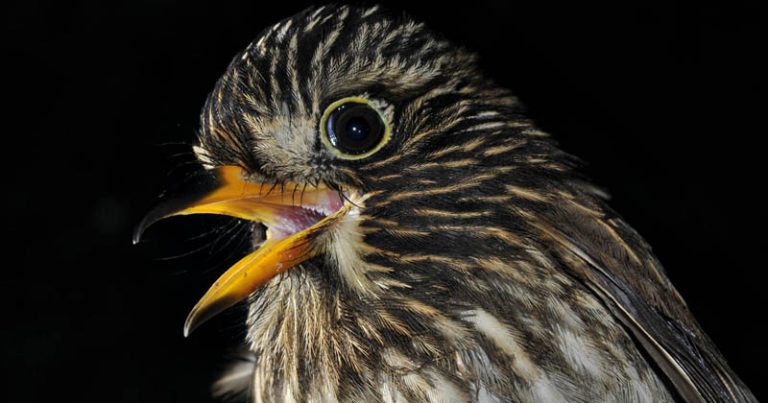Two theories are more accepted to explain the species diversification in the Amazon forest. The Riverine Barrier Hypothesis suggests that the current biological diversity patterns, in other words, the different characteristics that emerged throughout the evolution in each species, would be the result of large rivers separating the species. On the other hand, the Refuge Hypothesis suggests that the origin of these same patterns would be a result of climate changes throughout the glacial and interglacial cycles, when the fauna and flora were concentrated in large and more isolated fragments.
A study published in the journal Science Advances in July innovates by combining the two explanations introducing the concept of moisture gradient, explained by the gradual variation of moisture, which tends to be greater in the west and lower towards the east.

Photo: A. Gambarini
“The great finding of the article is that we now have a slightly more complete model, which considers not only rivers as barriers and climate change, but also changes that have acted in different ways throughout the forest”, explains Sofia Marques Silva, Ph.D. from the Institute of Biosciences (IB) of USP and one of the authors of the article along with her advisor, Professor Alexandre Aleixo, now based at the University of Helsinki, Finland.

Different works
The effort of several other studies aiming at combining both the Refuge Hypothesis, proposed by the ornithologist Jürgen Haffer 50 years ago, and the Riverine Barrier hypothesis, a centenary hypothesis from Alfred Russel Wallace, co-founder of the theory of evolution along with Charles Darwin, supported the article A dynamic continental moisture gradient drove Amazon bird diversification.

The number of field expeditions in the Brazilian Amazon increased significantly at the beginning of the last decade. The samples collected could finally be analyzed in newly established molecular laboratories.
The researchers were mostly from the postgraduate studies of scientific institutions based in the states of the Amazon forest and also from other renowned universities.
“The article is the result of a rereading of data that has been collected by several researchers over the last decade, comprehending data from Sofia’s advisor, Professor Alexandre Aleixo, from several of his students and several institutions”, explains Fernando d’Horta. He is Ph.D. from IB (Institute of Biology – USP), as well as Sofia Silva, and contributed to the article with his data.
Fernando d’Horta and the other collaborators also worked on the reanalysis of their previous studies, enabling the comparison. Understanding the times of divergence between the lineages of bird species distributed throughout the Amazon was necessary. Moreover, they rescued the demographic history of these populations such as their variation over time.
From the institutions, whose researchers participated in the study, besides IB, the National Institute of Amazonian Research (INPA), the Universidade federal do Pará (UFPA), the University of Kansas Biodiversity Institute and the Museu Paraense Emílio Goeldi, in which the scientist Sofia developed studies that contributed to originate the article, also stand out.
Covered regions
The size of the Amazon rainforest corresponds to more than one third of the Brazilian territory, and parts of South American countries, namely: Peru, Bolivia, Colombia, Venezuela, Guyana, Ecuador and French Guiana, the overseas department of France.

Despite the focus on the study of the Brazilian Amazon, the article separated the site into territories to encompass the entire Amazon region, considering the capacity of expression of the species and the dynamism of the rivers, which did not always have the same course over the millennia. All these phenomena played an important role in the Amazon diversification. “Thus, we have the regions of Napo, Inambari, Jaú, Imeri, Guyana, Rondônia, Tapajós, Xingu and Belém”, says Sofia Silva.
In total, 23 species or clusters of birds living in the forest were combined, with analysis of 157 lineages, 1,050 specimens with DNA analysis, and 6,527 records of observation of these birds throughout the Amazon. Even with these numbers, the scientist reports difficulty in having representativeness and sampling large enough to encompass the entire forest area.
“It is a very large area of rainforest that arise questions on how all the diversity has emerged. It is difficult to reach a consensus and a single hypothesis since many species have their particularities such as different responses to climate variations, to changes in the river landscape, to the emergence of the forest”, explains the researcher.
From this new study, it was possible to conclude that the lineages diverged at a given moment and there was a time when a population turned into two distinct populations. “And we estimated that based on the DNA analysis we have made”, she says.

Climate impact
The diversity of fauna and flora in the Amazon biome is notorious. Any modification in the forest can result in many impacts, with species constantly discovered due to its extension and remote areas. The moisture gradient offers a new look at this diversity, which was already relatively known in other groups of living beings such as mammals, and at the observation that the west of the Amazon was more diversified than the east.
“However, we establish the pattern counterclockwise, in which the northern and western species diverged at first, and then they could colonize the south and southeast, with clime playing an important role in allowing the forest to advance more recently”, points out the scientist.
Only after this advance due to the climate the species colonized and remained in the southeastern Amazon region, in the area comprising the Xingu and Belém. Therefore, the published data show that the species of southeastern birds are the youngest ones, emerging when the rainforest expanded to this area.

As the climate did not vary homogeneously throughout the Amazon, the rivers had dynamic courses and formation and the larger or smaller species developed more or less abilities necessary to migrate, in other words, to cross the river and reach an area than others. There are also other studies showing that species’ ability of expression was very important for Amazon diversification.
“This is the reason why all of this must be aggregated into one single model, and our data rightly pointed to the aggregation of the different hypotheses that had been separately published and thought when they actually unite and complement each other”, explains Sofia Silva.
Fernando h’Dorta tells about the contradiction between both theories. “These hypotheses were mostly treated as mutually exclusive, either the Riverine Barrier Hypothesis or just the Refuge Hypothesis were considered as an agent for diversification.”

The existence of younger species in the southeastern Amazon region also indicates that the forest cover is historically unstable and highly influenced by the reduction of precipitation. The southeastern region of Amazonia is included in what is known as “Arch of deforestation”, a region to the south and southeast of the Amazon that is losing more forests at a faster rate and very quickly today.
“The southeast of Amazon and the area of Belém have lost many forests, and the extinction of species has already been recorded. Human actions are accelerating the process of climate change”, warns Sofia Silva.
“Our study can show that all changes resulting of deforestation can very quickly lead to diversity loss in the Amazon, if nothing is done”, she concludes.
The article can be accessed at this link.
By Caio Santana – jornal.usp.br
